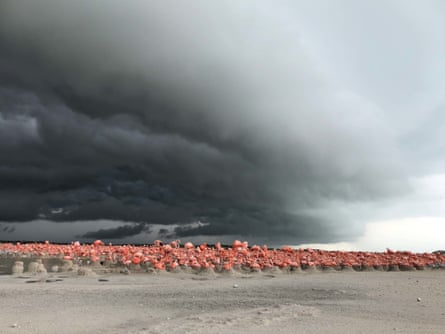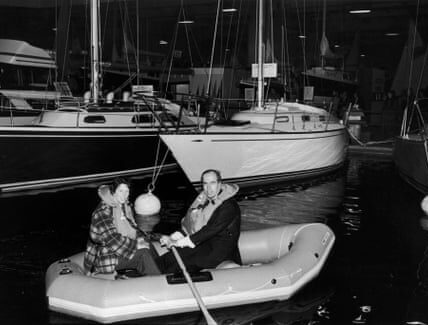Review of Planet Earth III: David Attenborough Continues to Deliver Stunning Television
I
It is concerning that, after six years since its previous installment, the third series of Planet Earth has taken on a more somber tone. As usual, these documentaries, narrated by Sir David Attenborough, showcase the magnificent marvels of the natural world. The footage, collected over five years in 43 different countries, is remarkable and breathtaking. The first episode focuses on coasts and takes us on a journey from Kent to Australia, passing through South Africa, Canada, Indonesia, and beyond. The magnitude and range of this endeavor are truly impressive.
Watching this scene is a source of immense pleasure. The perspective is from above, resembling a painting and strikingly beautiful, as seal pups play around a South African peninsula. However, their joy is short-lived as great white sharks view them as a buffet. In Namibia, two lion sisters are adapting to hunting seabirds at night, although cats are not fond of getting wet. A right whale gives birth and nurtures her calf in a nursery near the coast of Argentina, where the calf has companions to play with. Insects are no match for archerfish, who shoot water up to 2 meters to knock them off leaves and turn them into meals. In the Arctic’s melting glacier water, there are sea angels and sea butterflies – ethereal creatures that seem like they belong in a fairy tale, glowing and dancing, mesmerizing with their otherworldly appearance.

However, this is not a different universe and it is definitely not a fairy tale. It is still possible to watch and appreciate this for its breathtaking footage. The cozy and gentle approach is a common feature of most nature shows, especially those on BBC One on Sunday evenings. The animals depicted here are mostly able to overcome the challenges thrown their way. The seals band together, forming an eco-mob, to ward off sharks. The resilience of the right whale is a shining example of hope: although the species was almost wiped out 40 years ago due to commercial whaling, a ban on such practices has led to a population of around 12,000.
There is a lot of discussion about species adapting to the changing world. Normally solitary hunters, it is unusual to see great white sharks cooperating with one another, while seals are seen chasing them away. After 40 years, desert lions have come back to the Namibian coast due to their newly protected status. While it is encouraging to see such optimism, this positive outlook may give the false impression that all will be well on Earth, despite the increasingly extreme, apocalyptic, and inhospitable conditions for organic life caused by human actions.
The alarm is not a loud cry of hopelessness, but rather a quiet warning. However, there is a recognizable pattern that is used to create a similarly powerful impact as seen in the Wild Isles earlier this year. Attenborough and his team ease the audience in with gentle stories, before delving into more brutal ones. At the beginning, Attenborough states, “We must view the world through a different perspective,” hinting at the idea that although a sea angel with a bright orange belly may be visually appealing, we cannot ignore the destructive consequences of the climate crisis.
In the first installment, two stories serve as warnings: the Caribbean flamingos trying to build nests in the salty waters of Mexico’s Yucatán peninsula, and the endangered green turtles of Raine Island in the Great Barrier Reef. Due to increasingly early “seasonal” storms, the nests of the flamingos are being flooded, putting their eggs in danger and leaving the chicks at risk of dying. The video footage that follows a storm surge depicts a post-apocalyptic scene.
In 1957, Attenborough captured footage of Raine Island and his initial encounter with green turtles, which is now shown in black and white. Unfortunately, the current situation is alarming. Within 30 years, if sea levels continue to increase, the island may cease to exist. The turtles are experiencing a mass mortality event due to changes in the coastline and rising temperatures. These changes leave them dehydrated and unable to access the water, ultimately leading to their deaths. The sound of a dying turtle is distressing and serves as a reminder of their dire situation.
This presents a less comforting depiction of Planet Earth III, even though it is tacked onto the end of the episode like a profoundly disheartening addendum. However, these warnings have been issued for years, and the irreversible point may have already passed.
Bypass the advertisement for the newsletter.
after newsletter promotion
Source: theguardian.com

